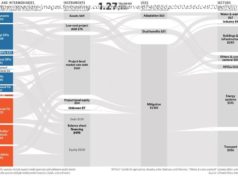There are ways to reduce the costs of health care, but the method that the ASPE is looking to undertake would only stifle innovation by American pharmaceutical manufacturers whose research is unmatched on the international stage.
Today’s report by the Health and Human Services Office of the Assistant Secretary for Planning and Evaluation (ASPE) attempts to draw comparisons between drug prices in the United States to those in 16 other developed countries.
The report specifically targets Medicare Part B and medications that are administered directly by doctors, including those for the sickest seniors with cancer, rheumatoid arthritis, colitis, and eye conditions.
Health and Human Services Secretary Alex Azar said on Twitter that, “the current international pricing system has put America in last place. »
In this Wednesday, Sept. 12,2018, photo Health & Human Services Secretary Alex Azar speaks during an interview with The Associated Pressin New York. Azar the administration’s point person for efforts to lower drug prices, conceded in a recent AP interview that it will be a while before drug prices fall. (AP Photo/Mary Altaffer)
This recent report which aims to highlight the prices Americans are paying for their drugs and the government’s proposed solutions is not the right approach to combating rising health care costs.
An unnamed Trump administration official even told Politico that “Nobody’s going to like this… It antagonizes too many people.”
The report did have important findings. It compared prices for 27 Part B drugs and found that, on average, the price in the US is 1.8 times higher than the average international ex-manufacturer price. For 20 of these drugs, the US price exceeded the international price by more than 20 percent.
There are ways to reduce the costs of health care, but the method that the ASPE is looking to undertake would only stifle innovation by American pharmaceutical manufacturers whose research is unmatched on the international stage.
One of the methods the report hopes to implement to reduce prices is to use the International Pricing Index. Under this approach, drug prices would be determined by averaging the price in 16 countries. These countries range from Austria to Sweden, and Canada to the United Kingdom; all of which have systematically different healthcare systems than what we have in the US.
While this strategy is seemingly intuitive, healthcare policy decisions, and specifically Medicare policy decisions should not be linked to policies in other countries. Many of these countries artificially suppress prices through government-dictated access restrictions and arbitrary cost-effectiveness thresholds.
In the U. S., we have had bipartisan approaches that reduced drug costs, and with greater support can achieve similar results to what the ASPE report is looking to do.
One of these bipartisan reforms was Medicare Part D. For more than a decade, Part D has consistently benefited patients in both cost-savings and positive treatment outcomes by helping curb the costs that Medicare enrollees pay towards essential medications.
This plan by the ASPE would ultimately undermine the strides made by Medicare Part D and the innovation in the American pharmaceutical industry, while catering to an arbitrary international standard.
Part of the reason why other countries have been able to charge discounted rates for their prescription drugs is that American companies have carried the burden of the research and development costs with the international community free-riding on American innovation.
Lowering American drug prices to the international rates would not just hurt drug manufacturers, but it would also hurt those who are relying on new pharmaceuticals to be developed. If the government intervenes as proposed today, companies will no longer be able to afford the extensive research which is required to develop new solutions, something that would impact American and international users.
American doctors are also indicating that this strategy would only burden the system with increased costs. In a survey of oncologists, 80% of respondents said that recent payment cuts have affected their practices, and 50% reported sending their patients elsewhere for chemotherapy.
Most of these practices reported sending their beneficiaries to hospital infusion centers, where chemotherapy administration is costlier for both beneficiaries and the Medicare program. Additional cuts would only exacerbate this trend.
To be sure, American consumers need lower drug costs, and in the past, I have applauded some aspects of the Trump Administration’s commitment to crafting policy that works toward this goal. However, there are time tested strategies of ensuring decreased drug costs overtime, and President Trump’s sweeping changes are too obstructive to be effective.
I’m a longtime political strategist, Fox News contributor and author of several books, including the recently published Putin on the March. Follow me on Twitter @DouglasESchoen.






